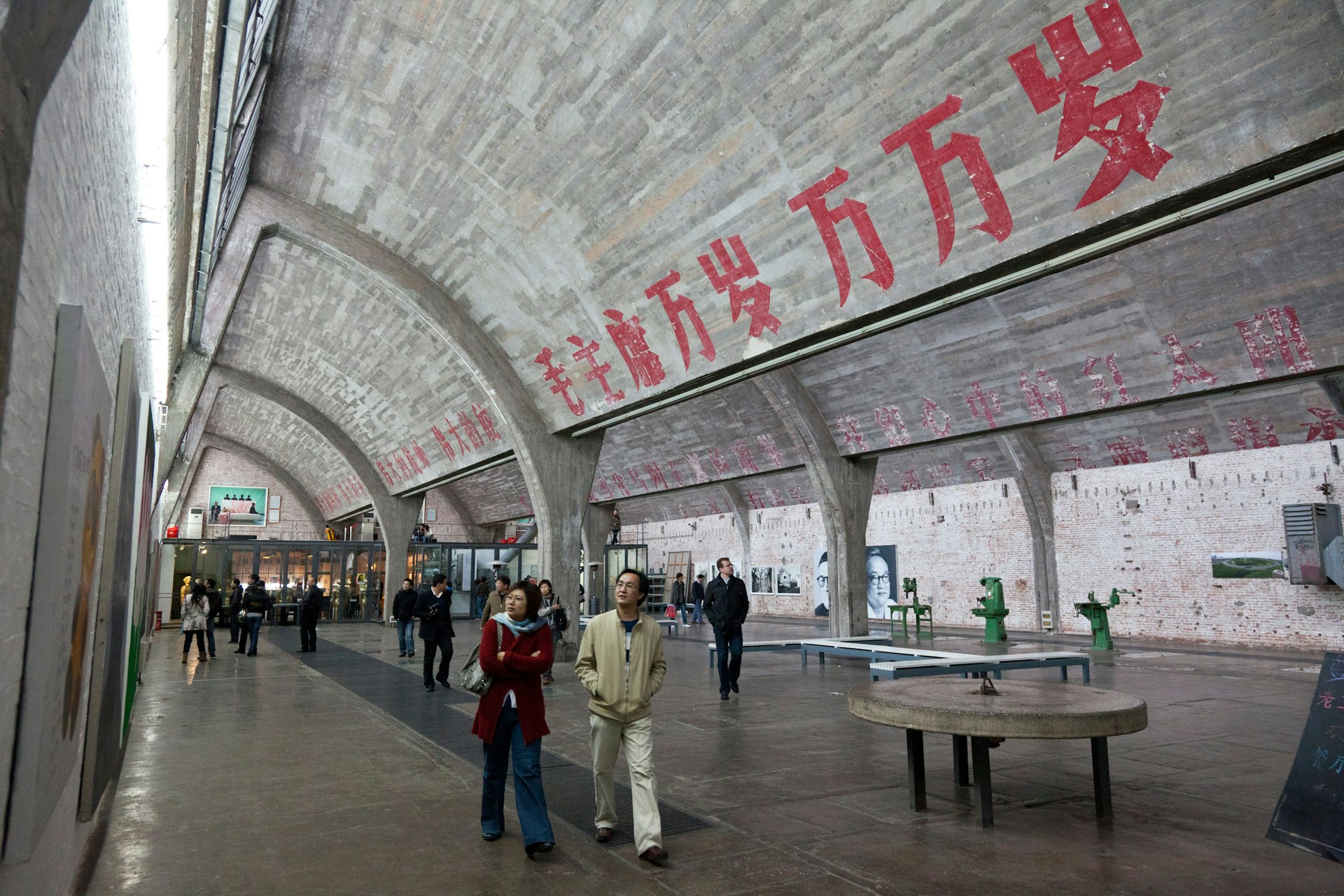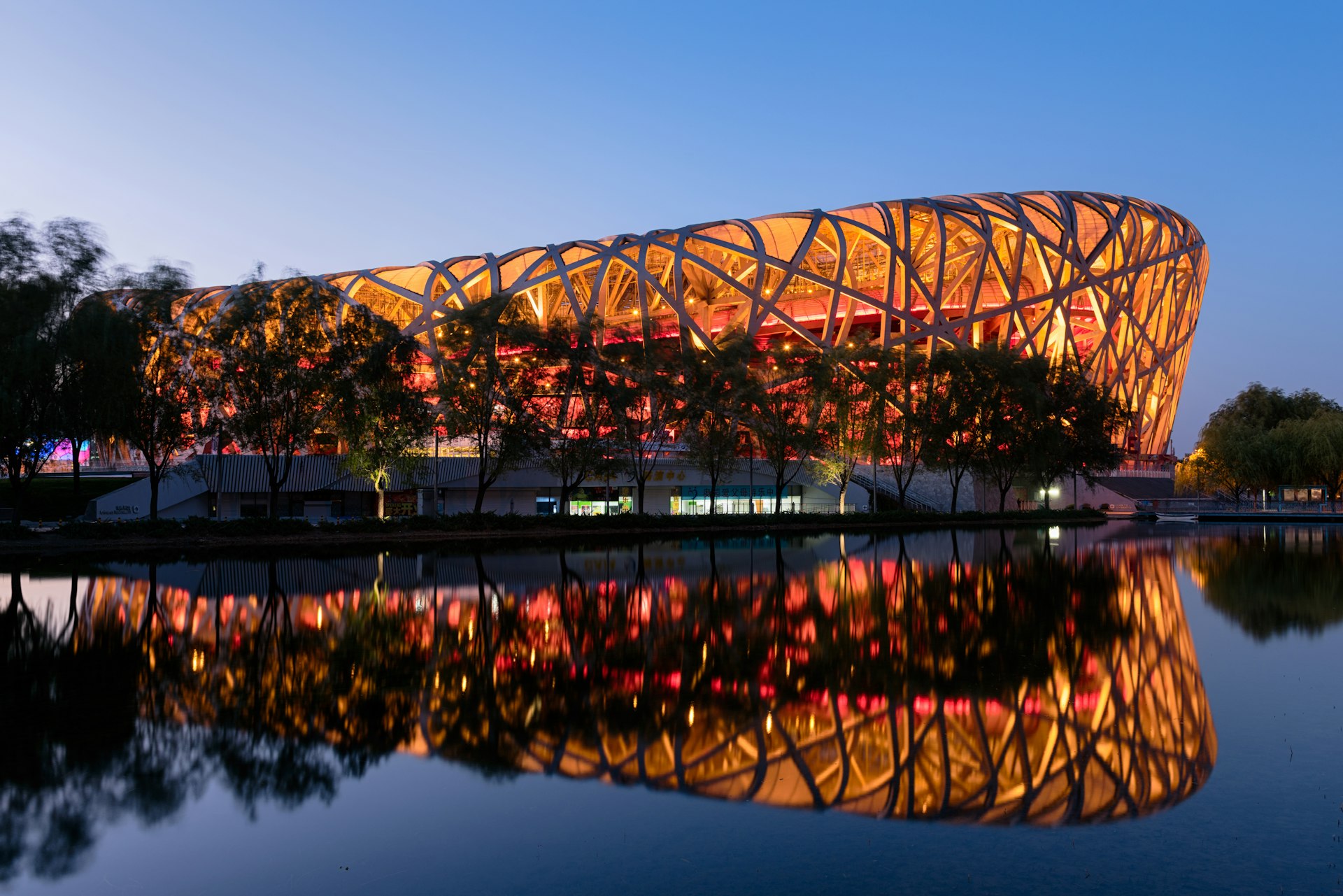Compared to other big-name international cities, Beijing remains a very affordable destination for most visitors.
Of course, that’s all relative to how much you want to splurge in this world capital, yes – but generally speaking, entrance fees are reasonably priced, public transport is inexpensive and eating out offers great value as well as big flavors.
As anywhere in the world, things can add up fast once you factor in your total spend: hotels, speakeasy cocktail bars and pints of craft beer, tickets for gigs and cultural performances…not to mention taxis, airfare, travel insurance and visas.
Which is why we’re here to help you counterbalance such outlays with a range of fabulous free activities and experiences. From contemporary Chinese culture to traditional arts and history, here’s our list of the best free things to do in Beijing.
1. Create your own modern-architecture tour
While many come to Beijing to seek out old-world charms such as palaces, temples, gates, drum towers and pavilions, the city also has cutting-edge architecture on par with any other metropolis in the world. There’s no more iconic example than the National Stadium, affectionately known as the Bird’s Nest, the site of both the 2008 Beijing Olympics and 2022 Winter Olympics.
Designed in collaboration with dissident Chinese artist Ai Weiwei, the stadium’s circular shape was inspired by traditional ceramics, then wrapped in a latticework of twisted steel that glows spectacularly at night. It sits alongside the striking National Aquatics Center: better known as the Water Cube, it was also used in the Olympics and has a bubble-form exterior that’s likewise dramatically illuminated at night.
Other contemporary buildings of note include the silvery National Center for the Performing Arts, which juts out from a body of water like a giant blob of mercury; the Rem Koolhaas–designed CCTV Headquarters – aka the Big Pants, and Beijing’s tallest building; and the CITIC Tower, better known as China Zun due to its resemblance to a zun, a traditional vase-like vessel. The late Zaha Hadid left her mark on the town, too, with the domed Galaxy Soho, the twisting Leeza Soho and the posthumously designed Beijing Daxing International Airport.

2. Get lost in a hutong
Traditional hutong residential areas are unquestionably a Beijing highlight. These distinctive neighborhoods comprise a maze of alleyways lined with courtyard houses, filled with the buzz of local gossip, playing kids and endless games of mah-jongg.
While many hutongs have unfortunately been razed to make way for modern developments, there are still areas you can wander, including around the Drum Tower, Lama Temple and the Xisi and Dashilar areas – the last a former red-light district. Many of the houses have been converted into bars, guesthouses, galleries and cafes; if you want to get the lowdown on their history, be sure to drop by Shijia Hutong Museum for some fascinating insights.

3. Take in the scale of Tian’anmen Square
Tian’anmen Square is both Beijing’s most iconic landmark and the national symbol of the People’s Republic of China. Of monumental scale, it’s the world’s largest public square, all military pomp and Soviet austerity. And its atmosphere is as electrifying as it is unnerving.
The square is flanked by the imposing National Museum of China and Great Hall of the People, while to the south lie the impressive gates of Qiánmén and Zhengyang Gate Arrow Tower. To the north stands the Gate of Heavenly Peace, fronted by a giant portrait of Mao Zedong, who declared the founding of the PRC at this very spot on October 1, 1949.
The most popular time to visit is for the military flag-raising ceremony that takes place each day at sunrise and sunset. It gets busy then, however, so aim to come on the early side to ensure you get a good view.
4. Get close to the Chairman at Mao Memorial Hall
At the center of Tian’anmen Square lies one of Beijing’s most surreal sights: the mausoleum of Communist China’s founder, Chairman Mao Zedong. Tourists flock here from across China’s far-flung provinces to pay their respects, joining a long, snaking queue for a fleeting glimpse of the Chairman himself. Despite Mao’s wishes to be cremated, his body was instead embalmed, and it’s been on public view here since 1977.

5. Hunt for bargains at Panjiayuan Market
Everyone loves a good flea market, and the sprawling stalls of antiques and handicrafts of Beijing’s Panjiayuan don’t disappoint. Browsing for unique keepsakes makes for an enjoyable hour or two; expect anything from calligraphy brushes to authentic Cultural Revolution propaganda and cigarette posters to Mao memorabilia and Buddhist artworks.

6. Soak up the atmosphere of the 798 Art Zone
Art lovers and anyone into offbeat attractions will love the sprawling 798 arts precinct, which occupies a space that was a factory in the 1950s – complete with faded Cultural Revolution–era slogans still visible on the ceiling. Today, the site has grown into a complex of galleries and public art installations showing the full gamut of emerging and established artists, as well as cafes, design shops, bars and live-music venues. There’s even a 798 app you can download to make getting around easier.

7. Contemplate history at the Ming City Wall Ruins Park
There’s more than one great wall to see in the Beijing area. Once tracing a perimeter of 24km (15 miles) around the city, the restored 15th-century Ming City Wall Ruins are the last remnants of the city’s 15m-high (49ft) inner walls. Today only 2km (1.2 miles) remain – the rest having been torn down to accommodate Beijing’s ever-expanding roadways and subway system.
Set among peaceful parkland, the ruins make for a pleasant place to stroll and take in a slice of history as you contemplate what Beijing might look like in another 500 years’ time.
8. Check out the National Museum of China and other free institutions
Beijing’s showpiece museum sits in a hulking 1950s Soviet-style building overlooking Tian’anmen Square. The exhibits inside cover 5000 years of Chinese history through all dynasties and ages, from Bronze Age works to Buddhist sculptures and more. And it’s free to enter – though, as with other state museums, you’ll need to bring along your passport to get in.
Other free museums worth a look include the Overseas Chinese History Museum, which offers an interesting background on Chinese settlement abroad; the Lu Xun Museum, celebrating the father of modern Chinese literature; the Capital Museum, where exquisite artifacts are on display; and the Beijing Natural History Museum, with its dinosaur fossils and other specimens (including some questionable taxidermy).

9. See works old and new at the National Art Museum
Another monumental Cultural Revolution-era building is home to this impressive art gallery, which showcases works by Chinese and international artists. In addition to a permanent collection, it features ever-changing themed exhibitions on everything from ancient silk scroll calligraphy to contemporary Chinese abstract painters. Again, don’t forget your passport for free entry.

10. Seek out a free section of the Great Wall
Stretching magnificently across northern China on its 20,000-plus km (12,425-plus mile) journey, the Great Wall is without question one of the nation’s most enduring symbols. And Beijing is one of the best places to embark on trips to the wall – including to several of the crumbling, untouched sections that aren’t ticketed.
While a visit to the areas with entrance fees won’t exactly break the bank, the free sections will give you a more peaceful experience, away from the jostling busloads of tourists, as befits a sight of such grandeur. Jiankou is one such area: located around 100km (62 miles) from Beijing, it offers a more dilapidated, untouched feel – perfect for intrepid hikers and travel photographers.
